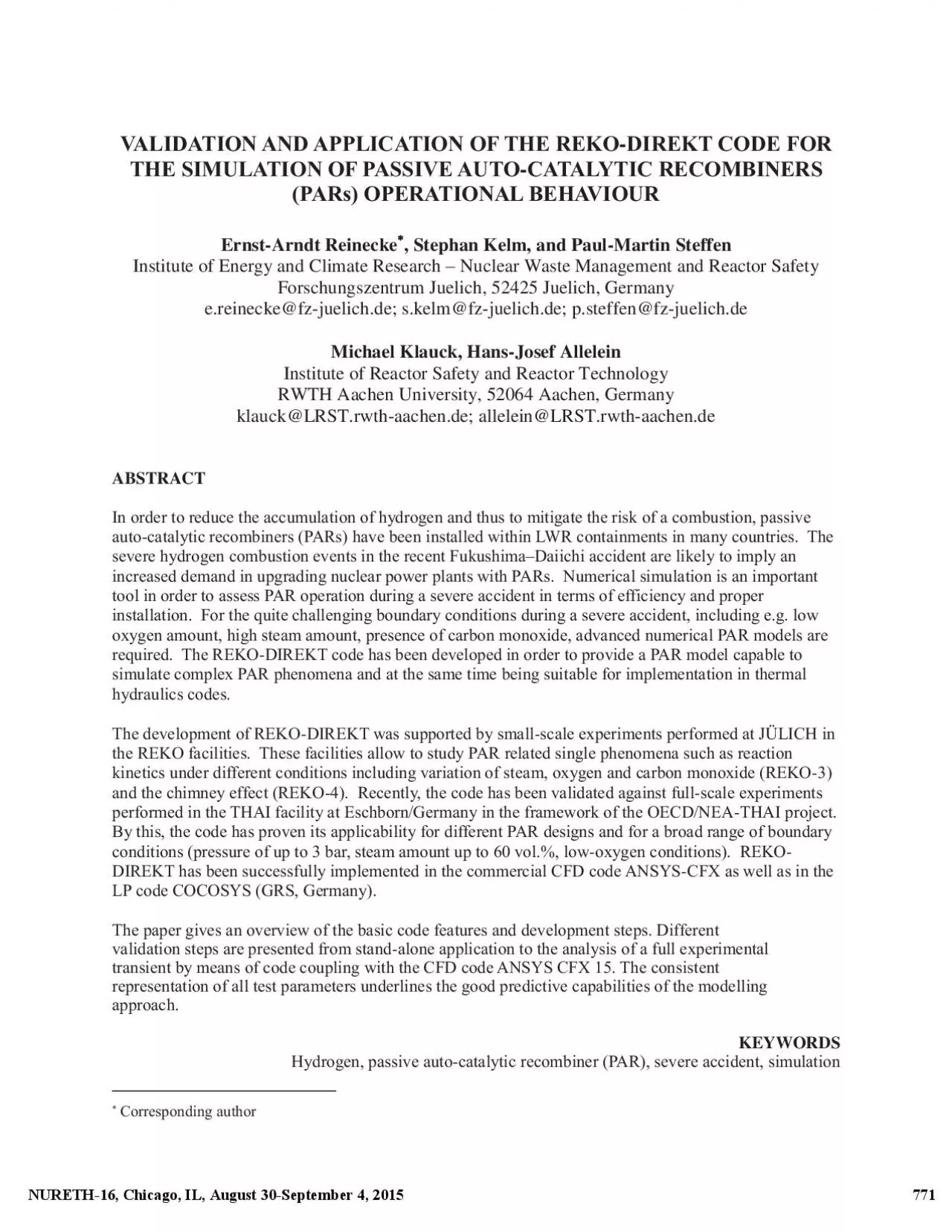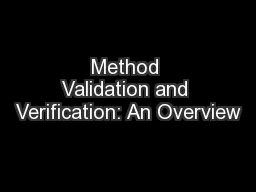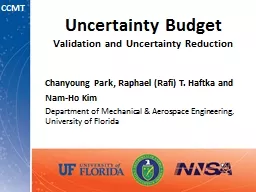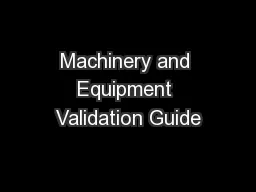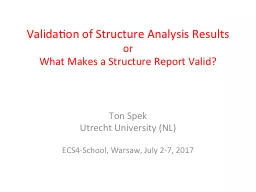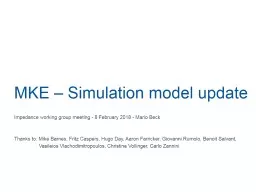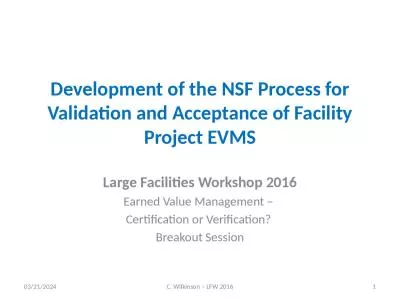PDF-VALIDATION AND APPLICATION OF THE REKODIREKT CODE FOR THE SIMULATION O
Author : caitlin | Published Date : 2021-06-30
2 Stephan Kelm and PaulMartin Steffen Institute of Energy and Climate Research Corresponding author 771NURETH16 Chicago IL August 30September 4 2015 INTRODUCTION
Presentation Embed Code
Download Presentation
Download Presentation The PPT/PDF document "VALIDATION AND APPLICATION OF THE REKODI..." is the property of its rightful owner. Permission is granted to download and print the materials on this website for personal, non-commercial use only, and to display it on your personal computer provided you do not modify the materials and that you retain all copyright notices contained in the materials. By downloading content from our website, you accept the terms of this agreement.
VALIDATION AND APPLICATION OF THE REKODIREKT CODE FOR THE SIMULATION O: Transcript
Download Rules Of Document
"VALIDATION AND APPLICATION OF THE REKODIREKT CODE FOR THE SIMULATION O"The content belongs to its owner. You may download and print it for personal use, without modification, and keep all copyright notices. By downloading, you agree to these terms.
Related Documents

